We will discuss noise in electronic systems & Its Types in this article. Noise is an undesirable signal. It interferes with the original signal and distorts it. Thus, the noise may superimpose on the original signal at the stage of transmitter, transmitting media, or at the receiver end.
It adversely affects the performance of the communication system. It is not possible to eliminate the noise completely. However, we can reduce it up to certain measures by taking appropriate measures.

From the above waveform, we can conclude the following for noise in the electronic system.
- No constant voltage magnitude
- No constant frequency
- Random & unpredictable behavior
Now we will discuss the types of noise in the electronic systems.
Types of Noise in Electronic Systems
There are different types of noise.
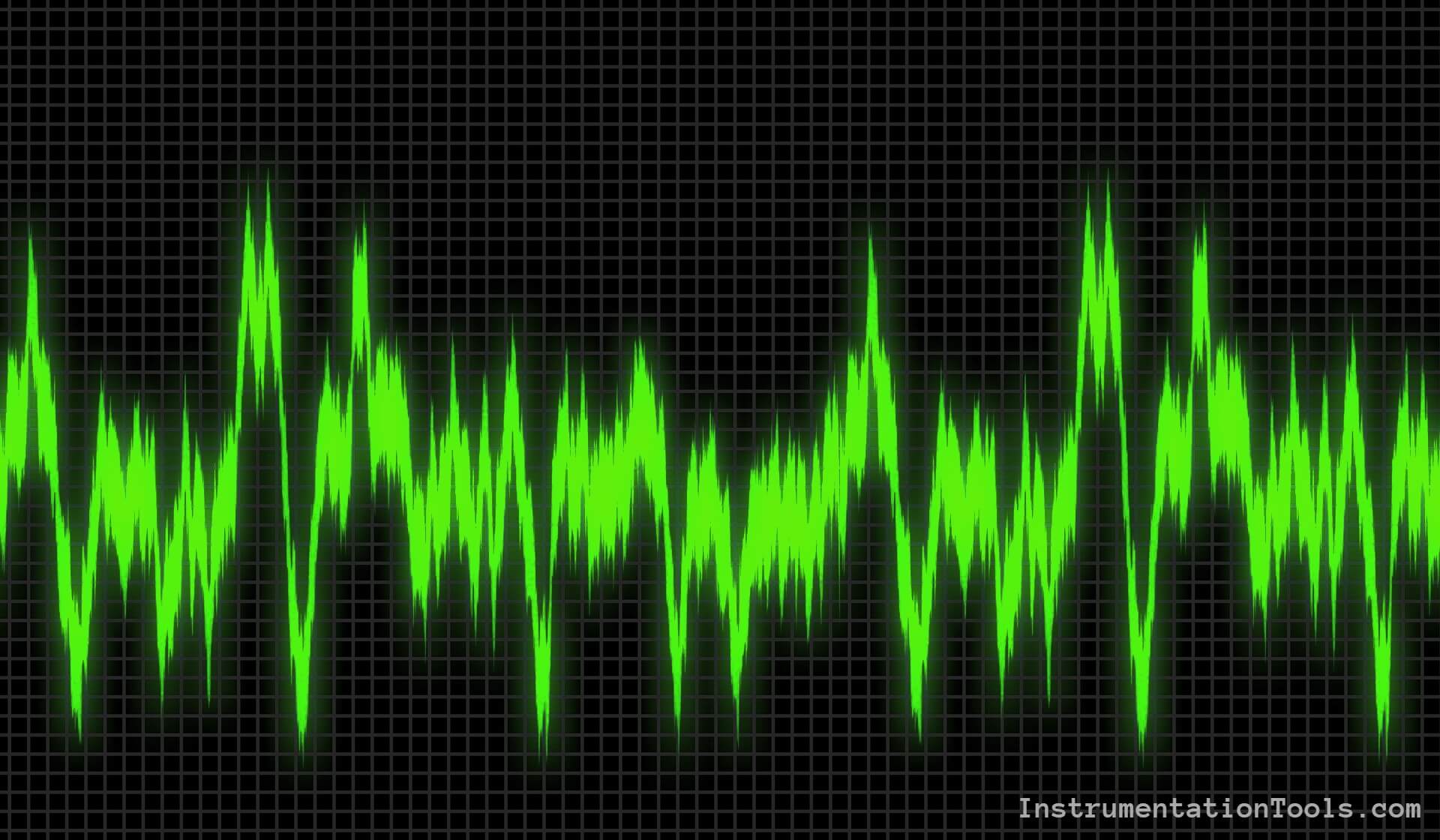
- Shot Noise
- Flicker Noise
- Thermal Noise
- Transit Time Noise
- Atmospheric Noise
- Crosstalk
- Man-made / Industrial Noise
- Impulsive Noise
- Low-frequency Noise
- Intermittent Noise
- Continuous Noise
Shot Noise
The discontinuity of the flow of holes and electrons in semiconductor devices creates shot noise. It is an internal type of noise. The reach of electrons and holes in a random manner is the main reason for this noise.
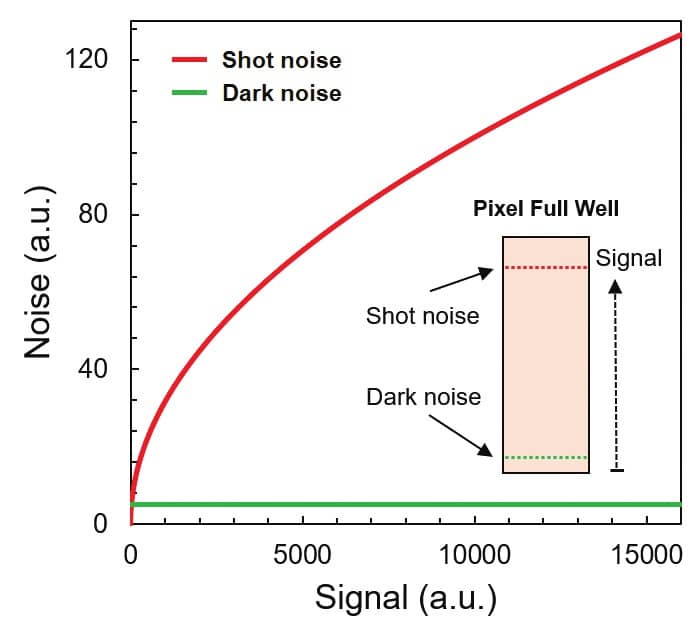
If the electrons arrive and the release happens at the fixed rate, it will not create the spot noise. The random arrival/release creates discontinuity, and further, it creates spot noise in the system.
The shot noise is dependent upon the current flowing. However, it does not depend on the system operating temperature.
Flicker Noise in Electronic Systems
Flicker noise occurs in almost all electronic devices. The flicker noise is;
- Proportional to the emitter current and junction temperature
- Inversely proportional to the frequency
The flicker noise is inversely proportional to the frequency that is why it is also called 1/f noise.
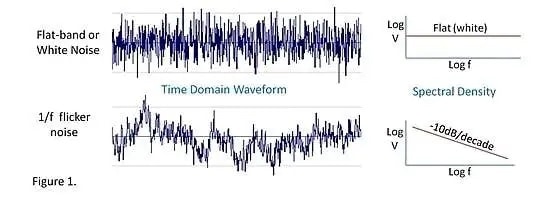
The flicker noise is more predominant at the lower frequency( typically less than 500 Hz). Thus, at the higher frequency flicker noise or 1/f noise is almost absent.
Thermal Noise
Thermal noise is also an internal type of noise. The thermal agitation of the electrons inside an electrical conductor at equilibrium generates electronic noise. In other words, thermal noise generates when the current passes through the resistor.
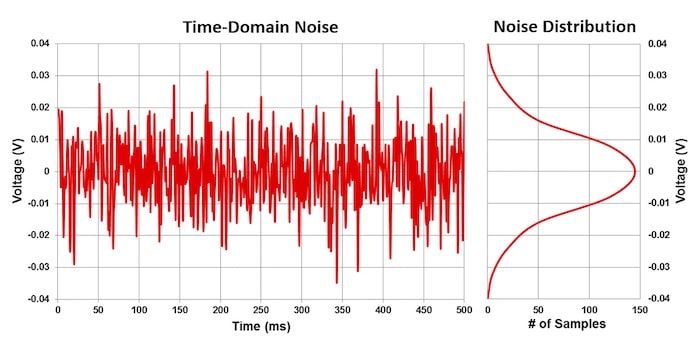
A transistor has a base, emitter, and collector. The resistance of the base, emitter, and collector can not be zero, it has a finite value. The thermal noise generates in the transistor because of its base, emitter, & collector resistance.
Transit Time Noise in Electronic Systems
Transit noise is an internal type of noise. The higher frequency increases the conductance, and further, it increases the spectral density of the signal. Thus, The time taken by the charge carrier ( electrons or holes) is the transit time.
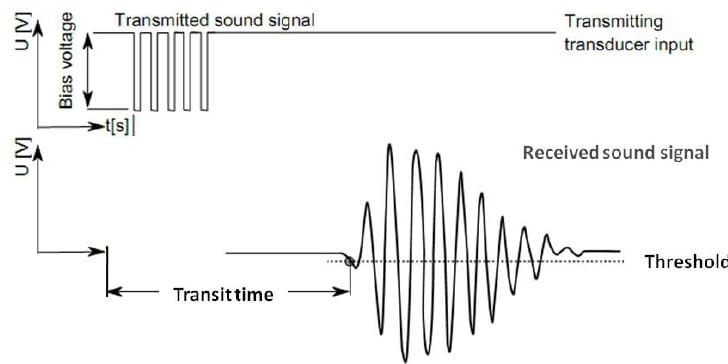
The transit time of the charge carrier decrease with an increase in frequency. However, the charge carrier requires some definite time to reach from input to output. If the charge carrier transit time is less, it creates transit time noise.
Thus, the transit time noise generation happens at high frequency. This noise is negligible at low frequency.
Atmospheric Noise in Electronic system
Atmospheric noise is an external type of noise caused by natural atmospheric processes. The followings are natural atmospheric processes.
- External lightning strike in thunderstorms
- Electrical disturbance – Ground faults, short circuit faults
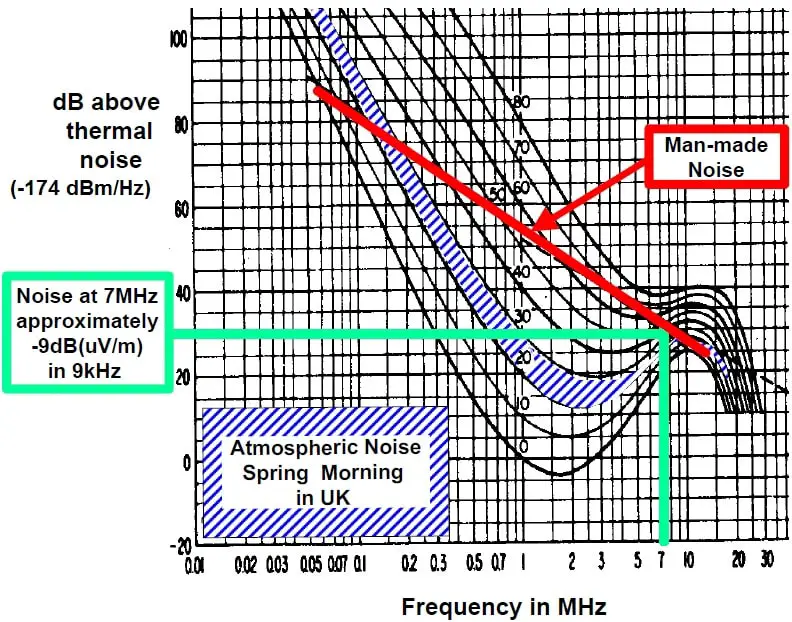
Image Courtesy – Wikipedia
The atmospheric noise has a wide frequency spectrum. The lightning strikes generate a voltage in the conductor. This generated voltage has wide frequency spectrums, and further, it superimposes on the original signal. Thus, the mixing of the noise signal with the original signal causes distortion.
Crosstalk
This is an external type of noise. When two or more signals flow in the same channel, both signals interfere with one another. This interference of the signals generates noise, and this noise is called cross talk.
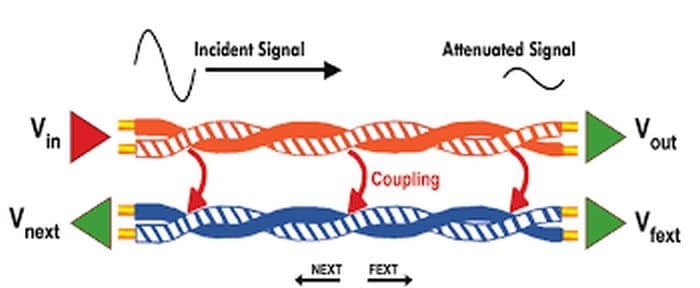
The stray capacitance & mutual inductance between the two lines are the main reasons for cross-talk.
In other words, cross talk is the phenomenon where two signals interfere with each other due to capacitive, inductive, or conductive coupling.
Man-made / Industrial Noise
This is an external type of noise. The source of noise is powerlines, ignition systems, electrical motors, and switch gears. The operation of these equipment/ machines creates electric discharge during their operation.
The noise is predominant in industrial and thickly populated areas. The frequency range of the noise is in the range of 1 MHz to 600 MHz.
Impulsive Noise
Impulsive noise is on/off pulses of short duration. The reason for the short duration on/off pules are;
- Switching Operation
- surface degradation of audio recordings
- clicks from computer keyboards
Impulse noises are short-duration pulses but they can cause permanent damage. The voltage spikes in equipment change voltage in adjacent pairs in a copper cable, and generate impulsive noise during switching operation.
Low-frequency Noise
Low-frequency noise, ranging from about 10 Hz to 200 Hz, has been recognized as a special environmental noise problem.
We use the sound level meter and a dosimeter to measure the impulsive noise.
Intermittent Noise
Intermittent noise is a variable noise, it is a mixture of somewhat noisy and quiet periods. Examples are;
- A train passing by
- a washing machine on its ‘wash’ cycle
- factory equipment that functions in cycles
- aircraft flying over your house
- most manufacturing noises
Continuous Noise
The continuous noise is produced continuously, for example, an electric motor that keeps running without interruption. The sources of this noise are factory equipment, engine noise, or heating and ventilation systems.
Read Next: